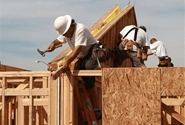Analysis

November 19, 2018
Builder Confidence Suffers from Rising Home Costs
Written by Sandy Williams
Builder confidence in the market for newly-built single-family homes fell four points to 56 in December on the National Association of Home Builders/Wells Fargo Housing Market Index (HMI) as concerns over housing affordability persist. Although this is the lowest HMI reading since May 2015, builder sentiment remains in positive territory.
“We are hearing from builders that consumer demand exists, but that customers are hesitating to make a purchase because of rising home costs,” said NAHB Chairman Randy Noel, a custom home builder from LaPlace, La. “However, recent declines in mortgage interest rates should help move the market forward in early 2019.”
“The fact that builder confidence dropped significantly in areas of the country with high home prices shows how the growing housing affordability crisis is hurting the market,” said NAHB Chief Economist Robert Dietz. “This housing slowdown is an early indicator of economic softening, and it is important that builders manage supply-side costs to keep home prices competitive for buyers at different price points.”
Derived from a monthly survey, the NAHB/Wells Fargo Housing Market Index gauges builder perceptions of current single-family home sales and sales expectations for the next six months as “good,” “fair” or “poor.” The survey also asks builders to rate traffic of prospective buyers as “high to very high,” “average” or “low to very low.” Scores for each component are then used to calculate a seasonally adjusted index where any number over 50 indicates that more builders view conditions as good than poor.
All the HMI indices posted declines. The index measuring current sales conditions fell six points to 61, the component gauging expectations in the next six months dropped four points to 61, and the metric charting buyer traffic edged down two points to 43.
Looking at the three-month moving averages for regional HMI scores, the Midwest dropped two points to 55; the West and South both fell three points to 68 and 65, respectively; and the Northeast registered an eight-point drop to 50.







